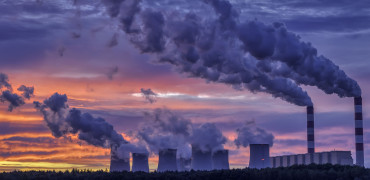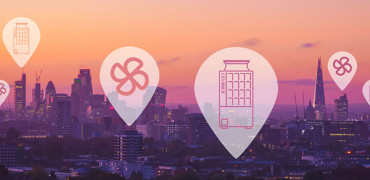As a building owner or facility manager, there are number of challenges you will face when the time comes to upgrade your current commercial HVAC system.
Legislation is placing additional pressure on those responsible for business energy and the reduction of company carbon emissions.
In June 2019, the UK government set a target of achieving net zero national greenhouse gas emissions by 2050 - the first country in the world to do so. This means we are aiming for a 100% net reduction in greenhouse gas emissions against 1990 levels.
This target, now a legal requirement, means that the UK must cut emissions (particularly carbon) across the whole economy, including transport, energy supply, industry and the built environment. The Climate Change Committee (CCC), which advises government, has said that the goal is ‘feasible but challenging’.
Although challenging and very daunting, this also presents an opportunity for new approaches to building design and operation to adopt low carbon solutions. But are businesses prepared to take on modern heating solutions instead of the traditional heating systems they are familiar with?
Using these technologies together, helps meet government targets and reduces primary energy consumption
What is a traditional heating system?
A traditional heating system will usually consist of bringing air in, force heating it up to temperature and then pushing it through your commercial building.
Oil or gas steam heating systems are one of the oldest ways to provide central heating to your commercial building, using oil or gas fuel to boil and condense into steam, to then pass through pipework. These systems have not aged well as they take a long time to heat up and lack energy efficiency.
Similarly, gas or oil water heating systems rely on being boiler powered by fossil fuels. The cons are also comparable as both are slow at heating up commercial buildings and are not energy efficient.
Traditional heating systems and gas boilers are on the way to be phased out but the target date for all systems to be replaced is still unclear. The UK Government has been pushing for the end of gas heating systems in the hope of achieving net zero by 2050, as they are highly polluting and inefficient.
Fortunately, technology has moved on and legislation is on a low-carbon future’s side. But how do these low-carbon technologies compare to our traditional heating systems?
What is a modern heating system or fifth generation heat network?
Modern heat networks, referred to as fifth-generation or ambient loop heat networks, function at low temperatures ranging from 10oC to 30oC. One advantage of this low-temperature setup is the ability to incorporate multiple water-source heat pumps into the network.
These innovative heat networks are perfectly suited for multi-purpose buildings, which may include retail spaces, gyms, or offices on the lower floors, and apartments above. Cooling systems installed in the offices or gym will release heat into the heat network, which then circulates to the apartments above.
Every apartment is equipped with its own heat pump capable of elevating the temperature of the supplied heat from the network. This heat can serve dual purposes, providing both domestic hot water and space heating.
Generally, a property that is connected to a modern heating system or fifth generation heat network will use between 35%-45% less energy than a conventional gas boiler or traditional heating system equivalent.
This is mainly down to one system heating multiple spaces, rather than a large number of individual boilers using energy to heat individual units; which inevitably means that more useful energy is produced, and less fuel is wasted heating up individual boilers.
In addition to benefiting the environment, according to the UK Government in their Clean Growth Strategy, due to these technological advancements, a surge of new high-value jobs, industries, and enterprises has emerged.
Consequently, it has propelled the formation of a rapidly expanding and high-value 'low carbon' sector within the UK economy. As a result of this momentum, the low carbon sector now sustains over 430,000 jobs across the country, spanning various locations.
Are modern heat networks going to replace traditional heating systems?
The Climate Change Committee has highlighted that fifth-generation heat networks and heat pumps as significant technologies for our decarbonised future.
By using these technologies together, not only do we create more opportunities to meet government targets, but we also reduce our primary energy consumption.
The low temperature approach eliminates distribution heat losses and contributions to overheating in buildings.
We have been developing our expertise in heat pumps for many years. We have added to our range with the Ecodan Hydrodan, which a water-to-water heat pump designed to work in fifth generation heat networks, with a low-carbon future in mind.
Katie Mathers is Marketing Executive



